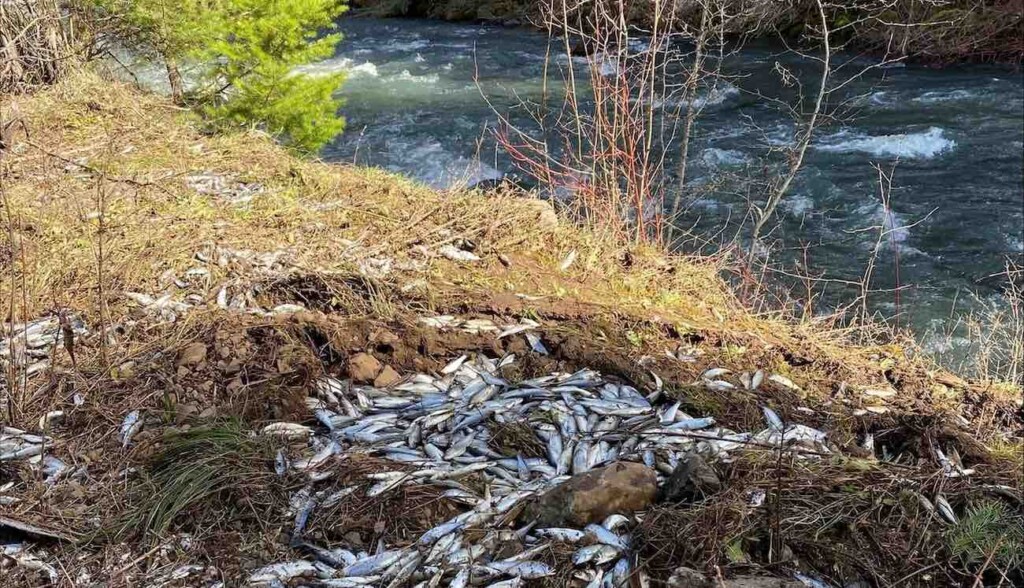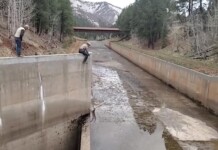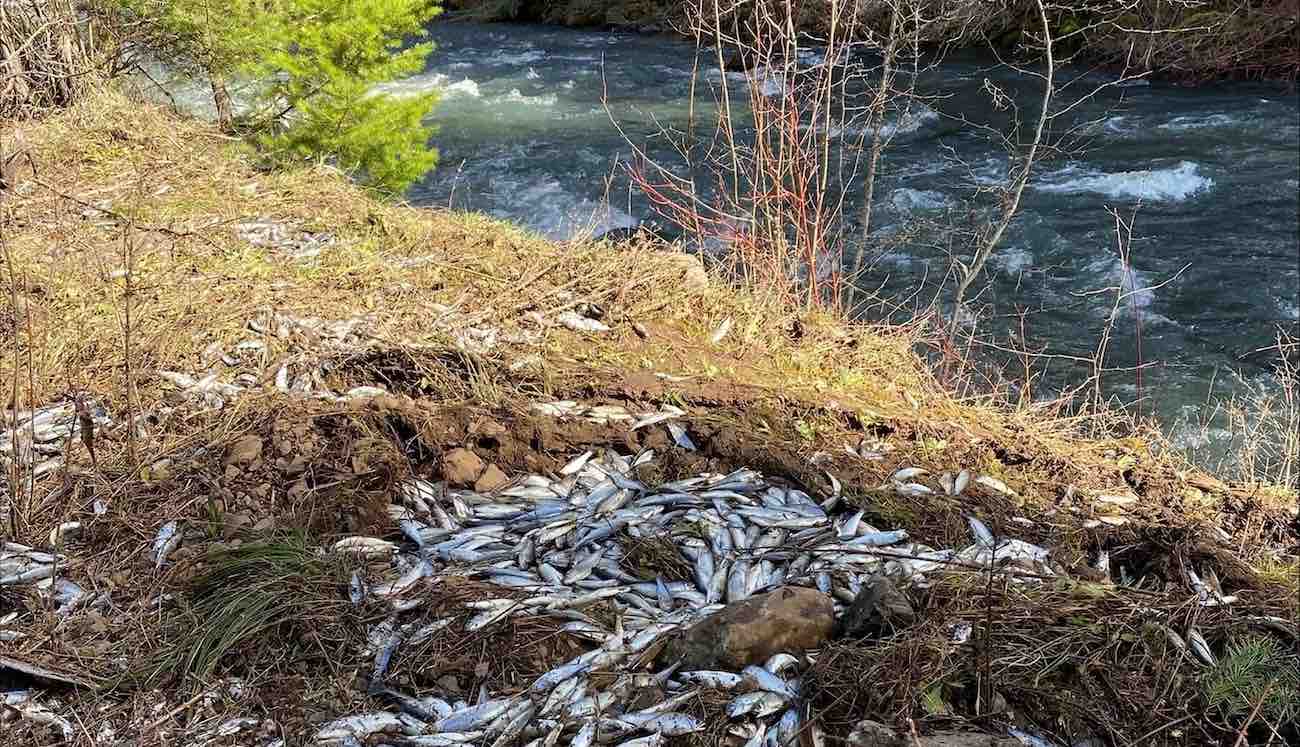
Disaster struck a truck transporting 102,000 young salmon to a hatchery in Oregon when it overturned on the road and the giant fish tank it was carrying burst open.
However luck was on the side of the small fries, almost all of whom rode the wave of water out of the tank and into Lookingglass Creek, the waterway which connects with the hatchery they were traveling to.
The driver had just left a local hatchery in Elgin, Oregon, about 300 miles east of Portland with 80,000 pounds of salmon and water. His eventual destination was the Imnaha River near Lookingglass Hatchery in Northeast Oregon, but with early morning dew on the roads, the driver skidded while heading around a sharp curve and the yaw of the water-filled container brought it down onto its side before sending it sliding over the road and down into a rocky embankment.
It was one of the worst disasters in the history of the program, dating back to 1982, which brings salmon “smolts” or young salmon, from river hatcheries downstream to hatcheries stopped up by dams far upstream.
While 24,000 of the smolts weren’t able to flop their way from the bank to the river, 77,000 were.
Typically, the smolts are brought up to the river hatcheries a short time before their eventual journey to the Pacific Ocean.
At their destination on the Imnaha River, they were meant to acclimate for a few days before their 650-mile journey through the Snake and Columbia Rivers to the Pacific.
MORE STORIES LIKE THIS: Woman Saved After Her Dog Found a Kidney Donor at the Beach: One-in-22 Million Odds
“They hitch a ride on the spring runoff, tail first, so there is less resistance, that way they can conserve energy until they get to the ocean,” said Andrew Gibbs, the Oregon Department of Fish and Wildlife’s fish hatchery coordinator for eastern Oregon in an interview on Wednesday.
Even though they weren’t born there, just a short few days at the constructed pool in the Imnaha Rivee is enough for them to specifically remember the route back from the ocean, using a kind of reserve scent signal.
MORE SALMON STORIES: California City Sees Explosion in Spawning Salmon Population in San Jose After 10 Years of Habitat Cleanup
By placing smolts in various rivers, creeks, and tributaries, the state ensures that salmon are running back upstream past all manner of communities, both human and animal, that rely on them for food, commerce, and recreation.
“They kind of smell their way back,” Gibbs said. “It’s an incredible life history.”
SHARE This Flop Of Luck From Oregon With Your Friends…




















